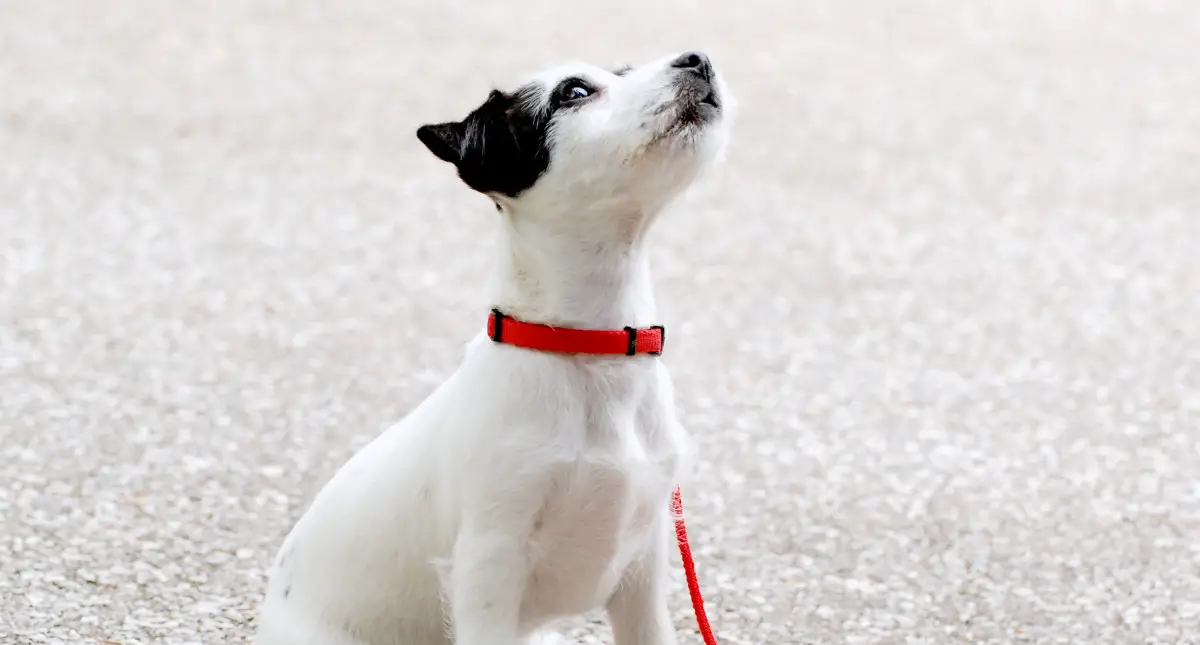Table of Contents
*This post may contain affiliate links. As an Amazon Associate we earn from qualifying purchases.
If you have a Jack Russell, then you have a smart and active dog — a dog that needs regular workouts for mind and body. Training can help.
But where to start?
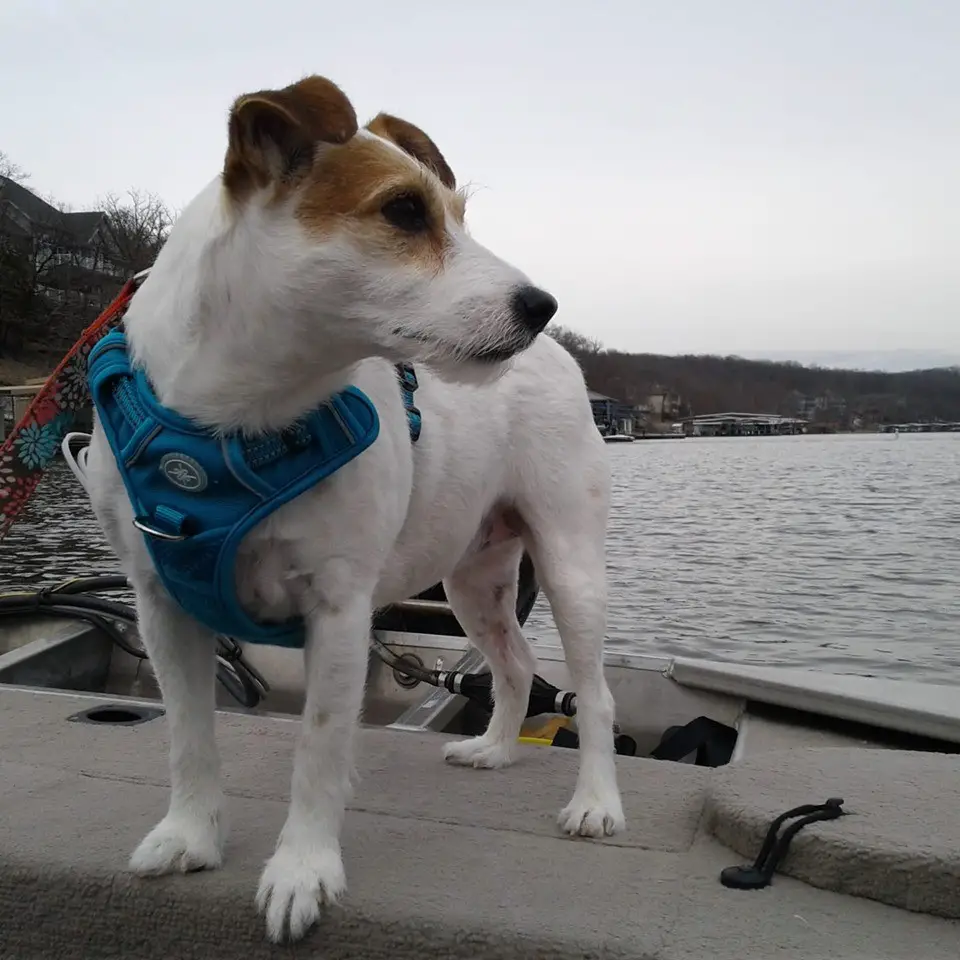
Basic obedience is a must, of course. But a clever Jack will make quick work of that. Fortunately, there’s an almost limitless range of advanced training your dog can undertake once the basics are out of the way.
How about urban dog training? Or learning show biz tricks? The right dog could even train to be a therapy dog.
There’s a world of continuing education out there for you and your pooch. Who knows how far you could go?
Clicker training
You might have seen people working with their dogs using a clicker. A clicker is a small, hand-held device that makes a clicking sound. Trainers use it in conjunction with other rewards, to tell their dogs they’ve done a good job and a treat is coming.
Clicker training is the foundation of a lot of advanced training. Clickers are inexpensive and readily available. They’re also fun to use!
Check out this clicker-trained Jack Russell in action.
Why use a clicker?
Why not just give the reward?
There are a few reasons.
First, a clicker delivers a unique sound that, unlike your voice, your dog isn’t used to hearing under other circumstances. Your dog only hears the clicker when he or she has done the desirable behavior.
Also, the clicker sound is always the same, every time, unlike a snap or a spoken word.
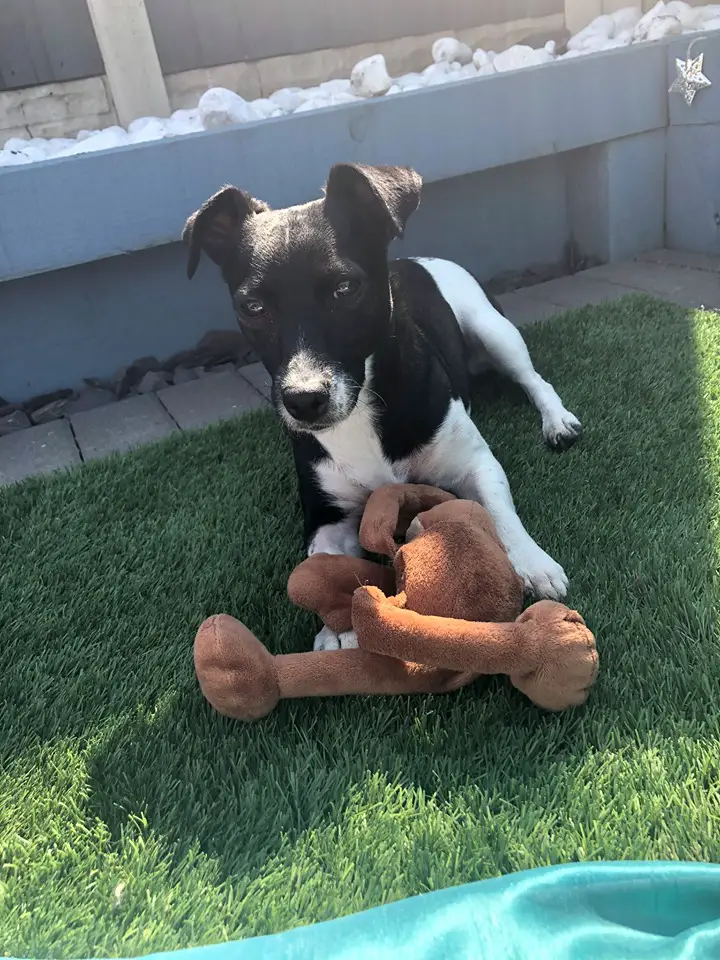
Finally, it’s immediate. You can click a lot faster than you can reach into the treat bag and pull out a treat. This way, it’s a lot clearer to your dog what he or she has done right.
Think of the sound as the snap of a camera shutter. You’re taking a picture of the moment your dog has done what you asked.
Want to learn more about clicker training? Check this out!
Bark training
Jack Russells can be barky little beasts. They may bark for attention, out of boredom, from anxiety, or because they really, really, really have something to tell you. They may bark to defend your property from invading mail carriers and squirrels. And some dogs do it just because it’s fun.
Fortunately, training can help to curb nuisance barking.
First, it’s important to identify the cause of the barking. Addressing the root causes such as anxiety or boredom can help to reduce problem barking.
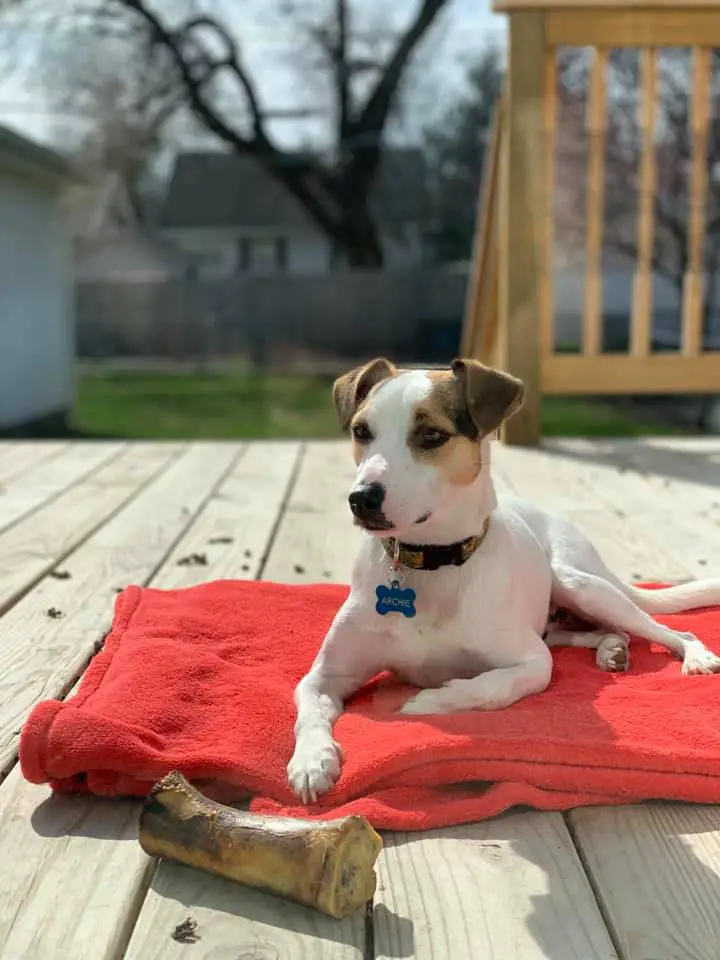
If your dog barks for other reasons, you can also teach them to be quiet. How? By teaching them to speak. It sounds counterintuitive, but it works.
So, how does it work?
There are two steps. First, teach your dog to bark on command. Then teach them to recognize quiet and do that on command. It’s not as difficult as it sounds. Check it out.
The next step is to practice the quiet command in context.
When the doorbell rings, for example, let them get off one good bark. Then give them a stern command, such as “quiet,” or “good dog.” This will let them know that you’re in charge, and they can stand down. When they’re quiet on command, give them a treat.
Agility training
The energetic Jack Russell is a natural for agility training. “Agility” in this context means teaching your dog to run an obstacle course at high speed. It’s a test of mind and mettle. Your dog can do it competitively or just for fun. Last year at Crufts, a Jack Russell named Olly did a little bit of both.
Agility training can also give your dog a fun, healthy outlet for that famous Jack Russell Terrier energy, both mental and physical.
Where can you find agility classes?
A lot of places!
First, start with your local Humane Society. Different branches may offer different classes. And if yours doesn’t offer the classes you’re looking for, they’ll probably be able to tell you who does.
Your local branch of the American Kennel Club is another good place to check. The AKC runs a comprehensive system of classes and training for all types of dogs, and all types of interests.
Other resources may include your local parks and recreation department, Jack Russell Terrier clubs, and local rescue organizations.
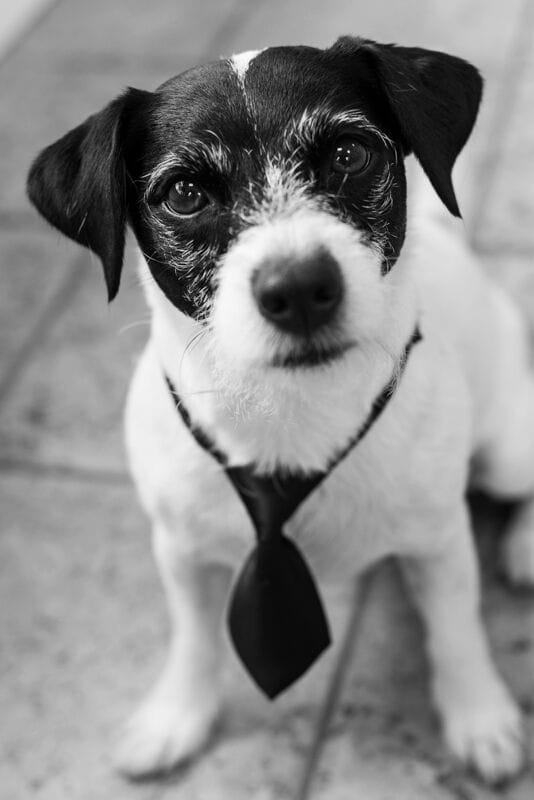
Training Certifications
If your Jack loves to learn, why not look into training certifications?
Certifications show that your dog has satisfactorily completed coursework with specific skills. And they can be very useful, especially if you think you might want to get your pup into show business, modeling, therapy work, or even just bring them to your work.
Canine good citizen

What is a Canine Good Citizen?
Canine Good Citizen (CGC) certification is advanced obedience training. It’s part of the AKC Family Dog program.
Basic training teaches your dog to recognize and respond to your commands. Canine Good Citizen training builds on those
And a CGC certificate shows the world that your dog can be a good boy or girl out and about in the community, as well as in private.
In addition to learning new skills, a CGC certificate can give your dog, and you, some advantages, as well. For example, some home insurance policies will give you a discount if your dog has a CGC certificate. And some homeowner associations actually require it. On top of that, if you’re a renter, and your landlord requires a pet deposit, they may waive that deposit if your dog has their CGC.
What will they learn?

A CGC course will prepare your dog for the CGC test, which is administered by an AKC representative. This test covers ten skills:
- Accepting a friendly stranger
- Sitting politely for petting
- Being well-groomed and allowing grooming
- Walking attentively on a loose leash
- Walking calmly through a crowd
- Sit, down, and stay
- Come when called
- Behaving politely around other dogs
Calm response to distraction- Calmly responds to separation from the owner
Where do I sign up?
Your local American Kennel Club can put you in touch with both classes and examiners.
Community canine
If your dog aces Canine Good Citizen and is barking for more, have a look at the Community Canine program (CGCA). Community Dog is another AKC certification. Basically, it’s advanced CGC.

What will they learn?
Like CGC, the CGCA title means mastery of ten points. These are:
- Sit, stand, or lie down until the owner signals otherwise
- Loose-leash walking
- Loose-leash walking through a crowd
- Ignores distractions
- Sits and stays in a small group of other dogs and owners
- Allows someone carrying a large object to pet them
- Understands and obeys “leave it”
- Down-stay or sit-stay from a distance
- Recall from a distance and past a distraction
- Walking through a narrow passageway, on leash, with the owner
Where do I sign up?
Community Canine (CGCA) is also an AKC program, and your local American Kennel Club branch can direct you to courses, materials, and instructors.
Trick Dog

Ok, ok, all that obedience stuff is useful, but isn’t there something a bit more, well, fun?
We’re glad you asked that!
If you’re thinking about getting your dog into show business, or even if you just want to impress your friends, why not look into Trick Dog training?
Trick Dog training is just what it sounds like: teaching your dog, old or young, some new tricks. The AKC offers five different levels of trick dog certification, each with its own set of tricks.
It can be the start of a fabulous career — or even just something fun for you and your dog to do together.
What will they learn?

There are five levels of Trick Dog certification, and each has its own requirements. Some of the tricks your dog will learn include:
- Walking on a balance beam
- Barking on cue
- Giving a high five
- Spinning in a circle
- Jumping through your circled arms
- Ringing a doorbell
- Playing dead
- Walking on their hind legs
And that’s just a sample!
Where do I sign up?
Through your local American Kennel Club branch.
Therapy dog
Unlike a service dog, a therapy dog doesn’t have to undergo training in specific tasks. But that doesn’t mean that any dog can do it, and it doesn’t mean that even the right dog can do it with no preparation at all.
Therapy dogs provide comfort to people in stressful situations, like hospitals and institutions, and disaster relief situations. Some therapy dogs work in libraries and schools, giving support to reluctant readers and other students who need comfort.

A therapy dog must be naturally calm and sympathetic. They also need to behave predictably in different social situations and with different kinds of people.
What kind of training can help?
Although there are no strict training standards for therapy dogs, training is nonetheless important.
Basic obedience, first of all, is a must. On top of that, a Canine Good Citizen certification is also helpful. And, depending on the setting where your therapy team is working, this can be enough.
But if you and your dog want to really cement your training as a team, the AKC offers additional training for therapy dogs.
This program has five levels, and each level is earned through work experience.
For more information, contact your local American Kennel Club office.
Where Will Training Take Your Dog?

Training doesn’t just make our dogs easier to handle. It gives them something to learn, something to do, and something to strive for. And for an energetic, brainy breed like the Jack Russell, that can make a big difference.
So, where will training take you and your dog?
Featured Image: CC0 via Pxhere

